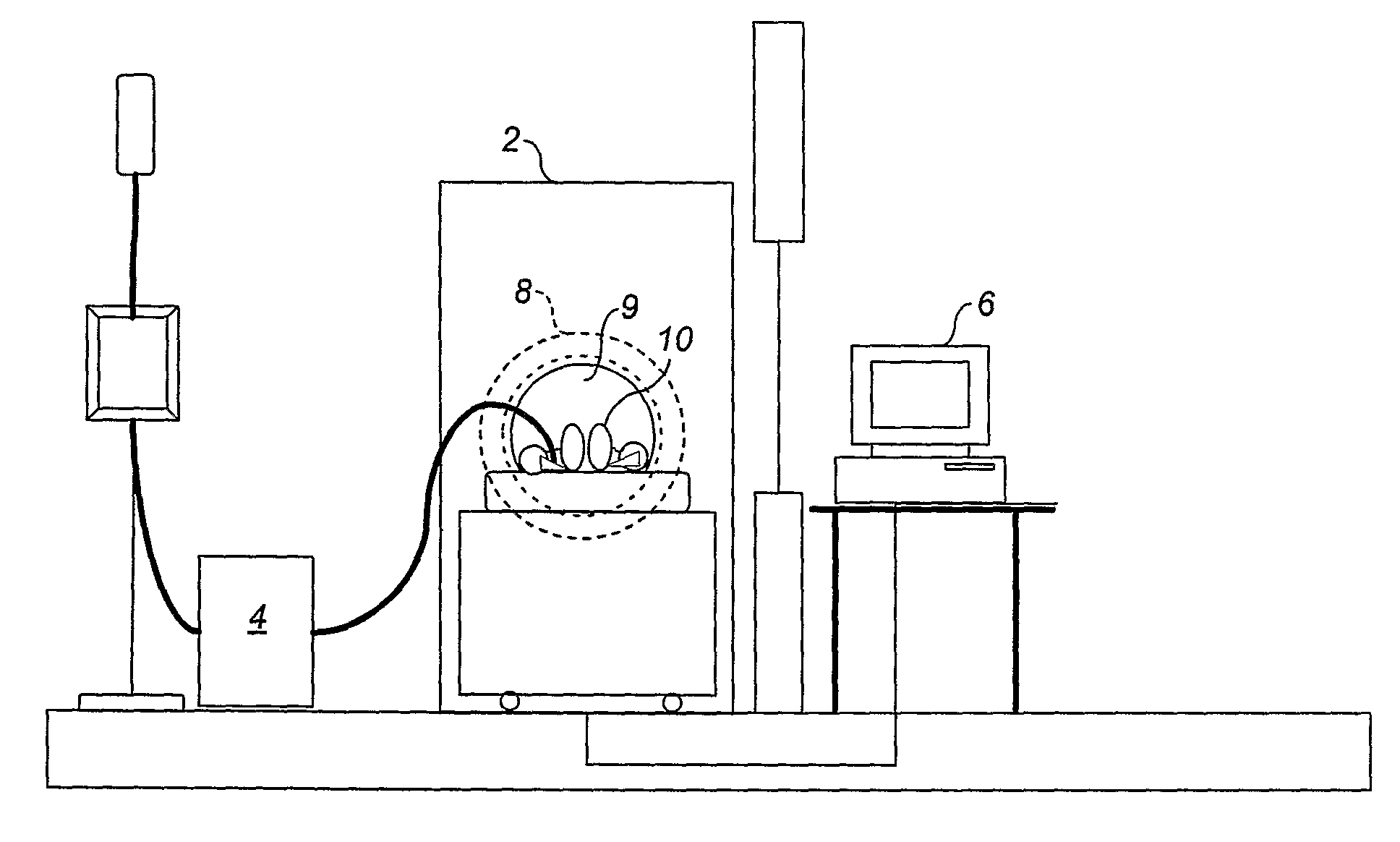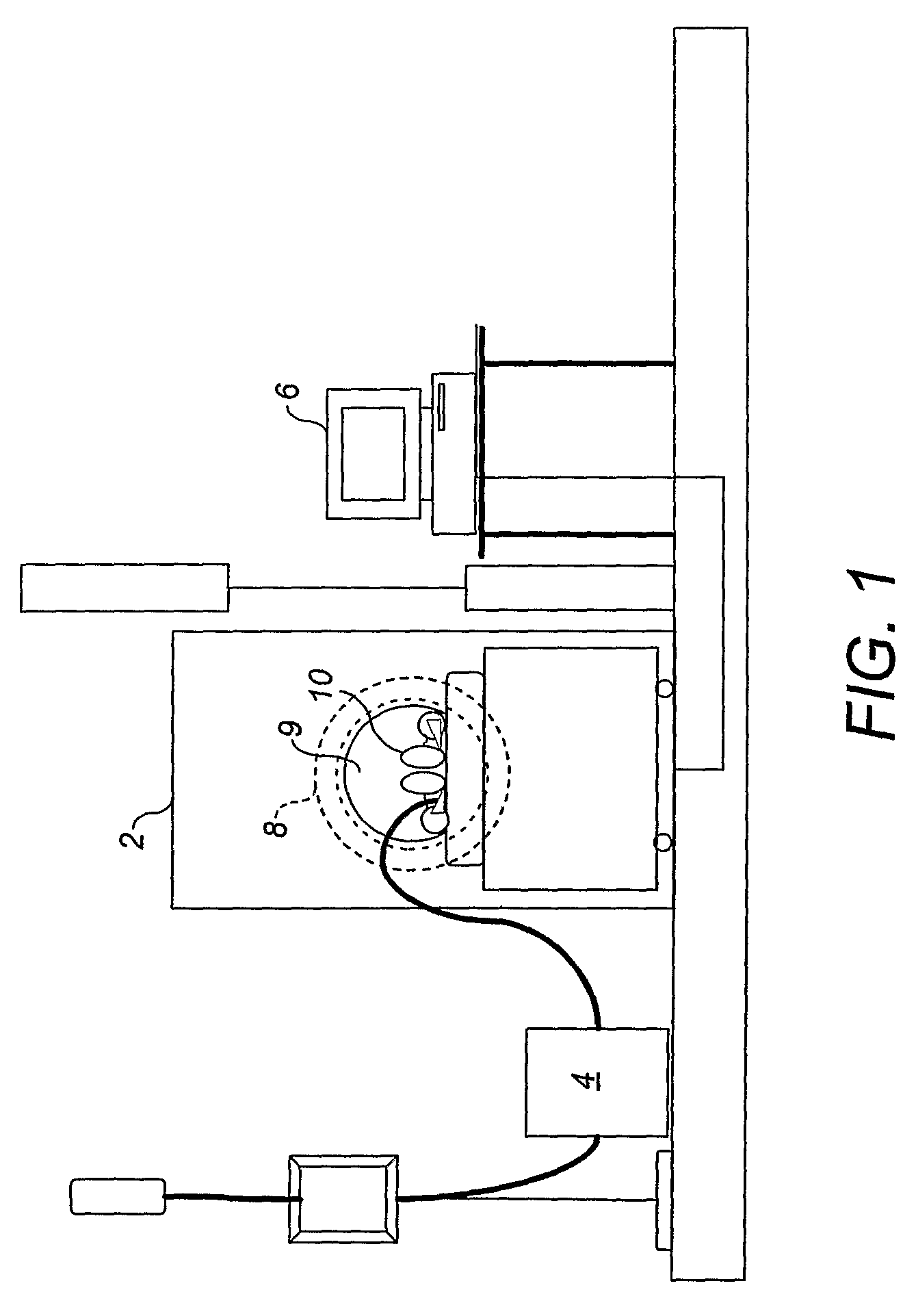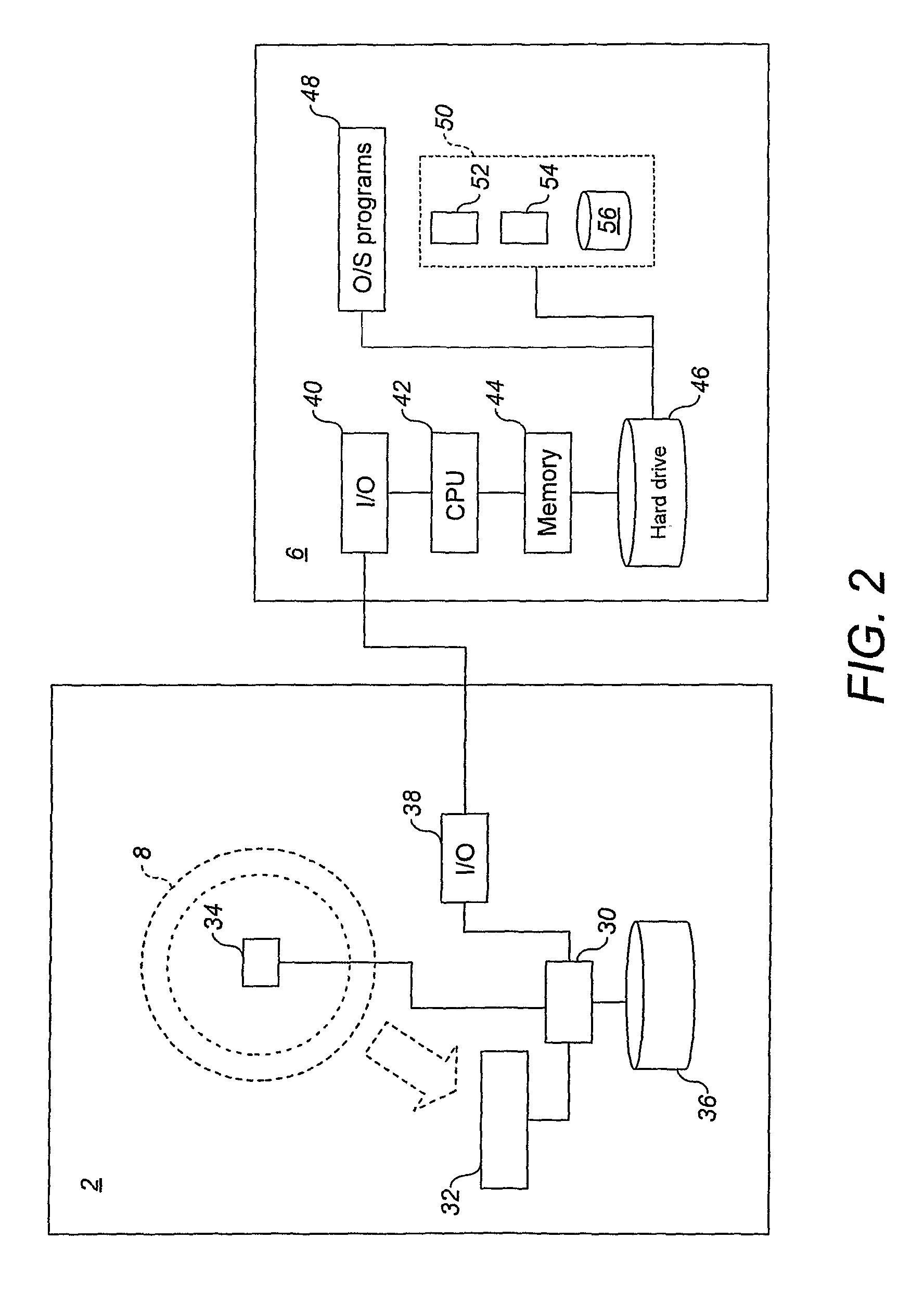Method of and software for calculating a scatter estimate for tomographic scanning and system for tomographic scanning
a technology of tomographic scanning and scatter estimation, applied in the direction of material analysis using wave/particle radiation, instruments, nuclear engineering, etc., can solve the problems of inaccurate fit, low quality of fit, inaccurate scatter estimate, etc., and achieve the effect of improving method stability and improving fit quality
- Summary
- Abstract
- Description
- Claims
- Application Information
AI Technical Summary
Benefits of technology
Problems solved by technology
Method used
Image
Examples
Embodiment Construction
[0040]FIG. 1 shows a tomographic scanner system, arranged in accordance with an embodiment of the invention, which includes a PET scanner 2, a tracer generator module 4 and an operator computer terminal 6. The scanner 2 includes a detector array 8 arranged about a scanning area 9, in which a subject 10 is located during a transmission scan and during an emission scan.
[0041]One embodiment of the invention relates to a PET scanner, for example, a PET scanner of the so-called Discovery™ ST type (manufactured by GE Healthcare). In this embodiment, the detectors in the detector array 8 are arranged in square detector blocks, each containing multiple detector elements. The detectors blocks are arranged in multiple rings, the rings being arranged adjacent one another along a scanner axis, perpendicular to the plane of the drawing.
[0042]As shown in FIG. 2, the PET scanner 2 includes a control unit 30, processing circuitry 32 for detection data received from the detector array, a motion dete...
PUM
 Login to View More
Login to View More Abstract
Description
Claims
Application Information
 Login to View More
Login to View More - R&D
- Intellectual Property
- Life Sciences
- Materials
- Tech Scout
- Unparalleled Data Quality
- Higher Quality Content
- 60% Fewer Hallucinations
Browse by: Latest US Patents, China's latest patents, Technical Efficacy Thesaurus, Application Domain, Technology Topic, Popular Technical Reports.
© 2025 PatSnap. All rights reserved.Legal|Privacy policy|Modern Slavery Act Transparency Statement|Sitemap|About US| Contact US: help@patsnap.com



